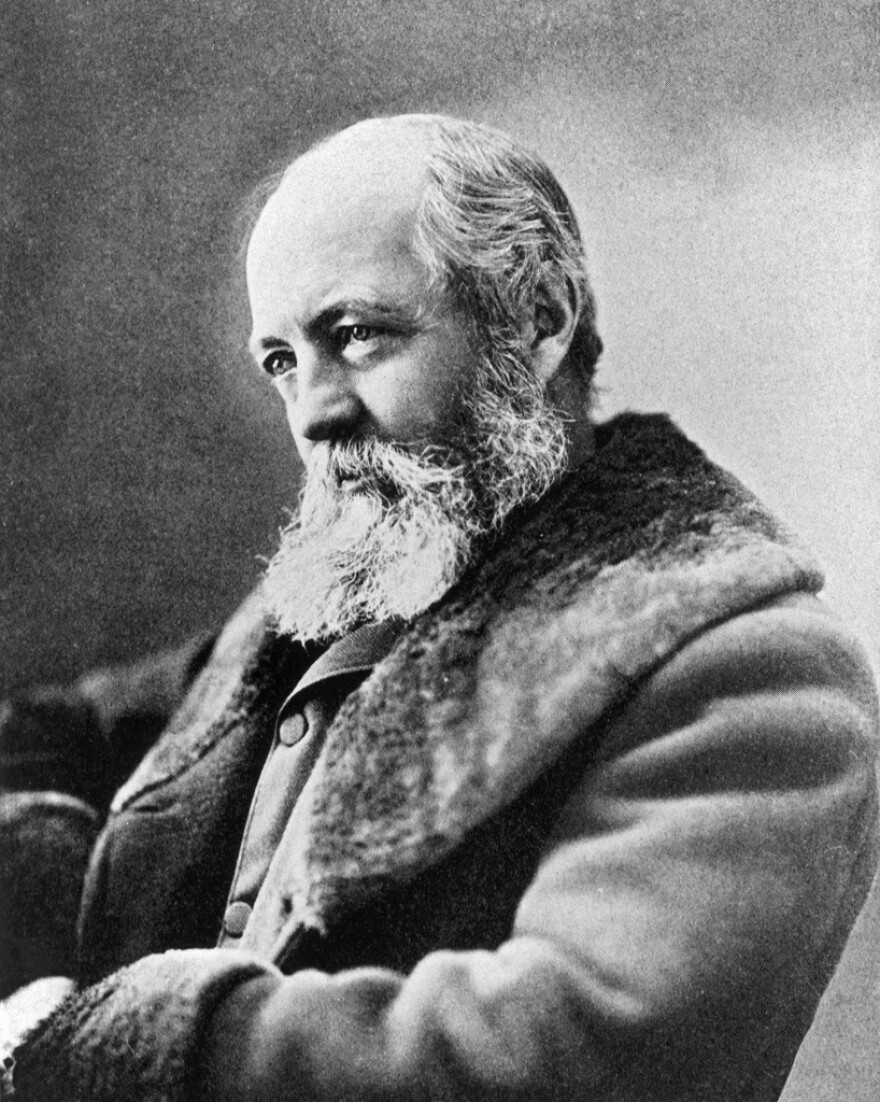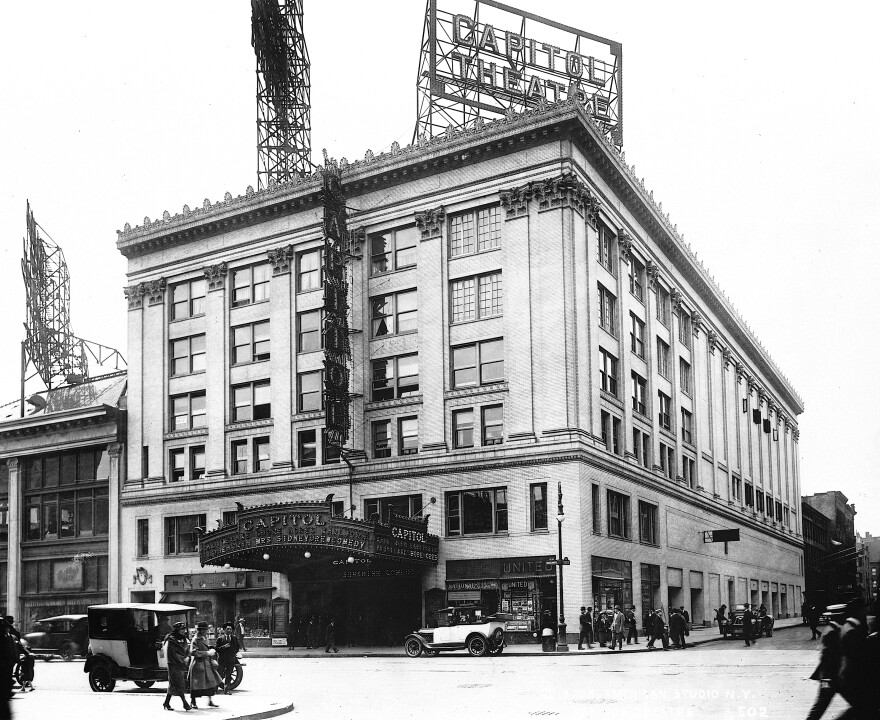In the decade leading up to World War II, “The Original Amateur Hour” was one of the most, if not the most popular radio programs in the country, showcasing unknown talent in a competition. The host and creator of the show was a man named Edward Bowes, known to his listening audience as Major Bowes. How did it all start? Well, he built it from the ground up - literally.

To say Edward Bowes was a genuine entrepreneur would be a great understatement. He grew up poor in San Francisco and ended up making a living as a teenager doing calligraphy. Bowes often did nameplates and invitations for fancy dinners and weddings. But Bowes did not just benefit from his entrepreneurial skills. He also capitalized from being in the right place at the right time.
On April 18, 1906, a massive earthquake devastated San Francisco, setting fire to much of the city. But amid the rubble, Bowes found opportunity. Within days of the earthquake, he started buying up destroyed property around the city. He eventually became a very wealthy man. But he didn’t stop there. At the time, Tacoma was one of the fastest growing cities in the U.S., and Bowes wanted in on the action.
Accompanied by a group of investors, Bowes made the trip up to Tacoma in October of 1906. Upon arrival, the group boarded a streetcar that ran from downtown Tacoma all the way to Steilacoom.
“The last real big hunk of property left on that line was Fircrest,” said Fircrest City Councilor, Blake Surina. Bowes and his investors purchased the land that Fircrest is on today.

When Tacoma was awarded the bid in the late 1800s to be the terminus for the railroad line in Washington, there were grand plans for the city. Fredrick Olmstead, the great American father of landscape architecture, was hired to do the first master plan for Tacoma. But Tacoma was growing too fast. Developers were forced to settle for a simpler city design than the one Olmstead had proposed.
Michael Sullivan is a principal at Artifacts, a historical preservation company in Tacoma.
“That Olmstead plan is always this kind of mythic dream of what the city could have been,” he says. “It really was kind of left up to Bowes to complete - execute really - the kinds of ideas that Fredrick Olmstead had.”
Bowes’ fingerprints are all over what is now Fircrest. Those same fingerprints can be found around Tacoma as well. He built a hotel attached to the Pantages Theater; the Hotel Illington, named for his wife, the actress Margret Illington; and the Bowes Building, which still stands on Ninth and A Street, built out of Vermont marble.
Eventually, Edwards Bowes’ interests changed. In 1910, he sold Fircrest and started buying up vaudeville theaters around the country. Bowes’ interests led him into becoming involved with the RKO Keith Circuit, the great vaudeville circuit.
Albert Fisher is a longtime television producer, who worked on the “The Original Amateur Hour” after it transitioned from radio to television.

“[RKO Keith Circuit] became so popular, that Major Bowes then went to New York City and built the grandest of all of the theaters in the vaudeville circuit, which was the Loew's Capitol Theater on Broadway in New York City,” said Fisher.
Eventually though, vaudeville started to die out. So Bowes changed the Loew's Capitol Theater from a vaudeville house into a movie theater.
Ever the entrepreneur, Bowes came up with the idea of doing events in the theater to lure people in to go to the movies.
“He would start doing what they would call ‘Plate Night’,” said Fisher. “You go on Wednesday nights, you’d go to the movie and you would get a dining plate. And if you go on Thursday you’d get a cup and a saucer. So it was a way of luring people in, and eventually you could build up your own dining set.”
This had mild appeal. So Bowes thought, why not an amateur night?
“So he started having amateur night where he would host it. And then he realized ‘Well gee, I’ve also got this radio station -WHN Radio - and I’m always in need of programming, so all I have to do is put a microphone in front of these amateurs, and I have free programming that I can put on WHN Radio,’” said Fisher.
Low and behold, this became the cornerstone of that radio station. It became so popular, that his good friend David Sarnoff, who owned NBC at the time, came to him and said, “Why don’t we take this nationwide?”
And so in 1935, they did. They started broadcasting the “Major Bowes Amateur Hour” as a national radio show. It became the most popular radio show in the history of broadcasting at that time.
Think of “The Original Amateur Hour” as kind of a “American Idol” of the ‘30s and ‘40s. Listeners would call in each week and vote on which amateur they thought should win. Many of these amateurs received their first national exposure on the program.
“The most famous one from radio certainly would be Frank Sinatra,” said Fisher.
https://www.youtube.com/watch?v=4BM5O_elYnU
And it wasn’t just people who became famous. Major Bowes would leave his impression on the entire entertainment industry. Ever hear of “The Gong Show”?
“In the old vaudeville houses, if an act was bad on a vaudeville stage, they would do what was called ‘give em the hook.’ Well Major Bowes realized on radio that you couldn’t hear the hook, so he developed the gong,” said Fisher.
But life was not perfect, and success would not last forever for Major Bowes. His wife died when she was only 52. They never had children. The show began to suffer during World War II. Wartime telephone restrictions kept listeners from being able to call in with their vote, which was one of the biggest draws to the show. At the same time radio news was becoming more popular. But Bowes impact is still visible. Whether it is on a small Pierce County town, or today’s television talent shows, it is hard to miss.







